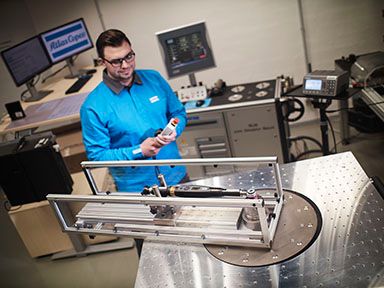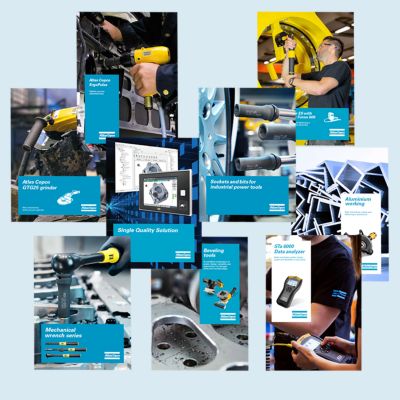Challenges of traditional joint tightening
Human error in manual tightening
To perform a tightening operators must carefully select the right screw, set the correct torque, and strike a balance between not over-tightening or under-tightening. Any deviation can make manual tightening susceptible to errors.
Material variability issues
The inherent variations of materials and conditions in production add complexity to the tightening process. Detecting and adjusting for these variations quickly is often challenging, requiring extra effort to maintain efficiency.
Limitations of traditional tools
Traditional tools like manual torque wrenches and pneumatic systems require physical adjustments for every torque change. Additionally, manual data collection risks inconsistencies and potential data loss.
Quality control issues
Post-operation manual verification can lead to missed opportunities for early detection. Delays in addressing these issues result in costly recalls and rework, and in high-volume production lines, the cumulative impact is significant. Manual checks can, further, add more torque to the joint potentially damaging the joint in the process.

Achieving the perfect joint
Screw joints are the most common method for joining components, valued for their simplicity in design and assembly, ease of disassembly, and the resulting boost in productivity and efficiency.
Achieving the perfect tightening starts with using the proper tightening technique and revisiting the fundamentals of tightening theory, torque and angle. Below, we explore these key concepts.
Tightening theory
Tightening plays a pivotal role in determining the quality of a joint.
When tightening, the most critical factor isn’t its dimensions but the clamp force, the force that holds the joint together. However, clamp force is somewhat elusive and impractical to measure directly. Instead, we focus on measuring tightening torque.
While torque and clamp force are related, only about 10% of the applied torque actually converts to clamping force.
- 40% is lost in the threads as the screw moves into the material.
- 50% is lost under the screw head when it contacts the surface.
The choice and amount of lubricant are another factor that affects final clamping force. For more insights on how forces act on joints, and how clamp torque and tightening torque are measured check out our tightening pocket guide.
Relationship between torque, angle, and clamping force
- Torque is the rotational force applied to a fastener.
- Angle of rotation is the amount of degrees the fastener turns after the joint engaged. turn after the fastener engages the joint.
- Clamping force is the axial load generated by the fastener on the joint.
As mentioned, tightening torque is an indicator of clamp force and reflects how much torque is used to hold materials together. Additionally, monitoring tightening angle enhances control over the process. It can also help ensure all joint components are in place and indicate whether components such as a washer or gasket are absent.
However remember, the relationship among these parameters is influenced by friction, material properties, and joint stiffness.
Measurement and Control
Tightening parameters can be measured dynamically or statically. Static measurement checks torque post-tightening, limiting issue detection, while dynamic measurement provides real-time insights. There are multiple options to dynamically measure and control the tightening quality:
1. Torque-controlled tightening
- A torque wrench or sensor measures the applied torque.
- The fastener is tightened to a specified torque value based on the product design.
- Limitations: Friction affects torque, leading to variability in clamping force.

2. Torque-controlled and angle-monitored tightening

- The fastener is tightened to a preset snug torque, ensuring it makes contact with the joint.
- After reaching snug torque, tightening continues with a specified angular rotation (e.g., 90° or 180°).
- When the final torque value is reached, it’s verified whether it’s inside both the torque limits and angle limits the bolt can move beyond the snug point.
- Since the target torque value and the angle value are known this helps better estimate the clamping force.
3. Monitoring and assessment of torque and angle
- Graphical representation of torque vs. angle is analyzed.
- Helps detect anomalies like thread stripping, joint relaxation, or incorrect material properties.

Causes of tightening errors
Insufficient measurement and control can lead to unncessary and costly tightening errors:
Damaged threads
If threads are damaged or insufficiently cut, resistance to turning increases, causing the torque to reach the preset value before the correct clamping force is achieved.
Missing joint componenents
It can occur that components like washers or gaskets are forgotten during assembly. Missing parts alter the torque rate and, consequently, the clamping force.
Thus, to create the perfect joint operators require greater control and measurability over their tightenings. To dive deeper into tightening techniques and the science check out our pocket guide.
Solution: Smart assembly tools
Our smart assembly tools bring exceptional precision, efficiency, and traceability to your operations giving you the control you need.
By continuously monitoring torque and even angle, they ensure the correct clamping force is achieved every time. Making each and every tightening precise and accurate. Instant feedback on smart tools give operators immediate certainty—confirming the perfect tightening the moment it happens.
Smart assembly tools, further, leverage the power of Industry 4.0 and allow for the capturing of data in real-time throughout the tightening process, ensuring traceability and reinforcing quality.
Ultimately efficiency is unlocked with our smart assembly tools. A unique opportunity when pairing our tools with our controllers is the ability to leverage our tightening strategies. With these strategies, whether the joint is critical or not, our smart tools guarantee consistent, high-quality tightening across the board.
Conclusion
Achieving a perfect tightening isn’t just about torque; it’s about precision, control, and consistency. Smart assembly tools make it possible, ensuring every single joint is secure and reliable. Trust your tools, trust your joints.
Contact us today to discover how our smart tools can help you achieve the perfect tightening.





